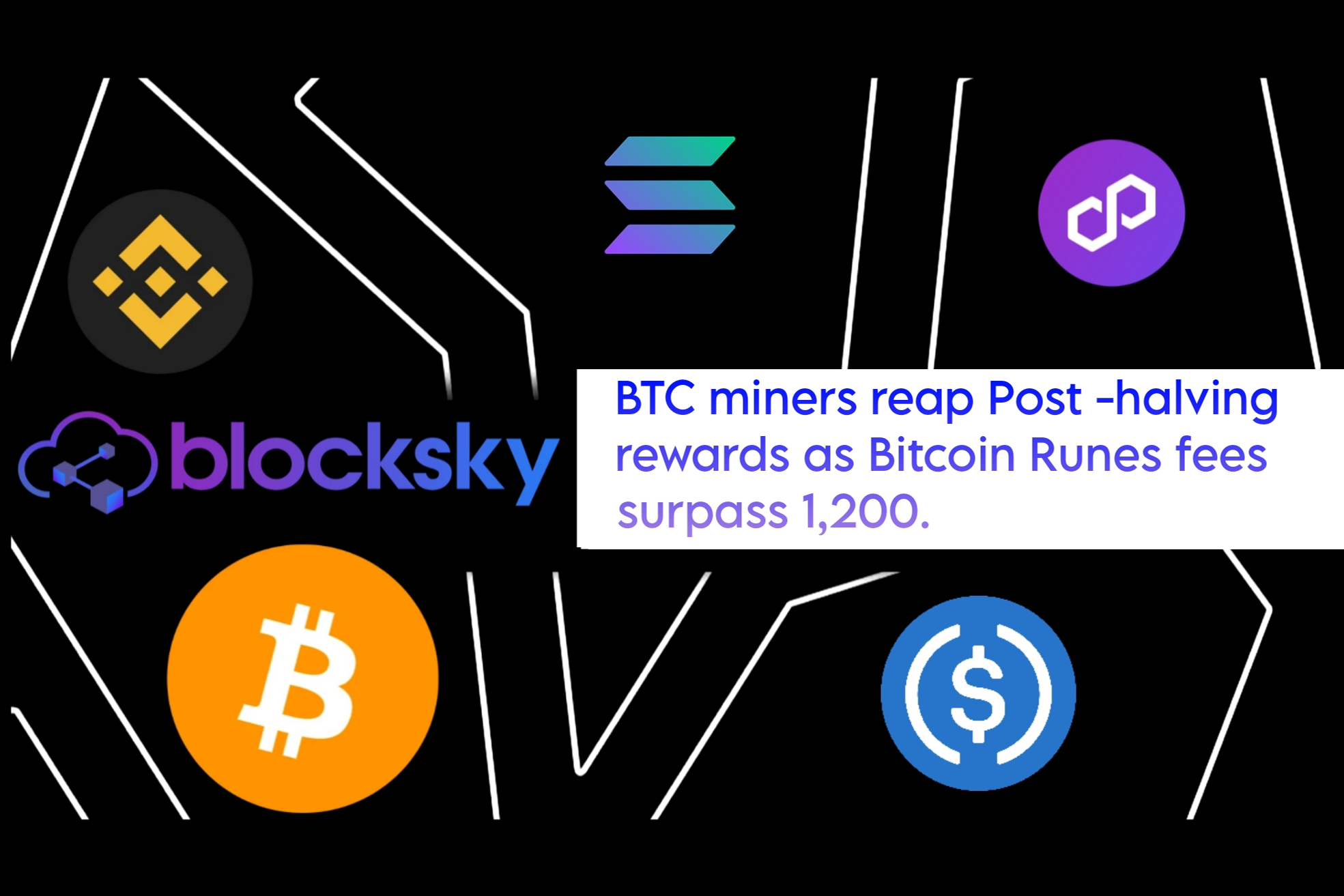2024-04-30

Bitcoin miners are reaping the benefits of the introduction of Runes after the halving event.
The skyrocketing transaction fees have helped mitigate the impact of reduced block rewards.
In the United States, two prominent mining firms have highlighted the positive influence of Runes both financially and functionally.
Greg Beard, the CEO of Stronghold Digital Mining, explained that the first week after the halving initially led to a predicted decline in mining revenue due to the reduction in Bitcoin rewards.
However, the surge in transaction fees resulting from Runes has offset this decline.
Adam Swick, Marathon's chief growth officer, echoed these sentiments, noting the spike in fees after the halving, driven by the launch of Runes and increased network activity.
Swick believes that this has temporarily minimized the impact of the halving.
According to Swick, the immediate impact of the halving has been an increase in transaction fees, which has almost compensated for the reduction in block rewards.
He also mentioned that Marathon had carefully planned for the potential volatility of the BTC price and global hash rate, ensuring that their day-to-day operations remain unaffected.
Since the Bitcoin halving, miners have received over 1,200 BTC worth of transaction fees through Rune transactions, as per Swick's statement.
Runes, a new token standard on the Bitcoin blockchain, have garnered mixed reactions from the Bitcoin community.
Bitcoin maximalists argue that the introduction of BRC-20 tokens, made possible by the creation of Inscriptions and Runes, detracts from the network's primary purpose.
Despite this, both Beard and Swick maintain a positive outlook for mining firms regarding the impact of Runes just two weeks after the halving.
Beard speculates on the impact of Runes and blockchain inscriptions, as well as the increase in transaction fees.
He likens the recent Bitcoin halving to "Crypto's Super Bowl" and attributes the increased fees to heightened interest in BTC.
Beard emphasizes the importance of considering where these fees will eventually stabilize.
He suggests that as more functionalities are built on Bitcoin, higher transaction fees may become the norm.
However, he cautions miners against relying solely on these potential increases without witnessing tangible benefits and broader adoption of these technologies.
Swick believes that innovations like Ordinals and Runes benefit the Bitcoin ecosystem, offering timely support to miners amid competition for diminishing block rewards.
He states that anything that enhances the usage and adoption of the Bitcoin blockchain is advantageous for miners and the ecosystem as a whole.
Beard adds that miners view functionalities like Runes positively as they compete for Bitcoin rewards and seek hash rate increases.
He also notes that the addition of new functionality to the largest decentralized network not only diversifies Bitcoin usage but also supports its growth by attracting more users, potentially leading to higher transaction fees.
Jag Kooner, head of derivatives at Bitfinex, comments that miners generally view innovations like Runes favorably if they enhance the functionality of the blockchain and attract more transactions.
This ultimately results in increased fees per block and greater overall mining profitability.